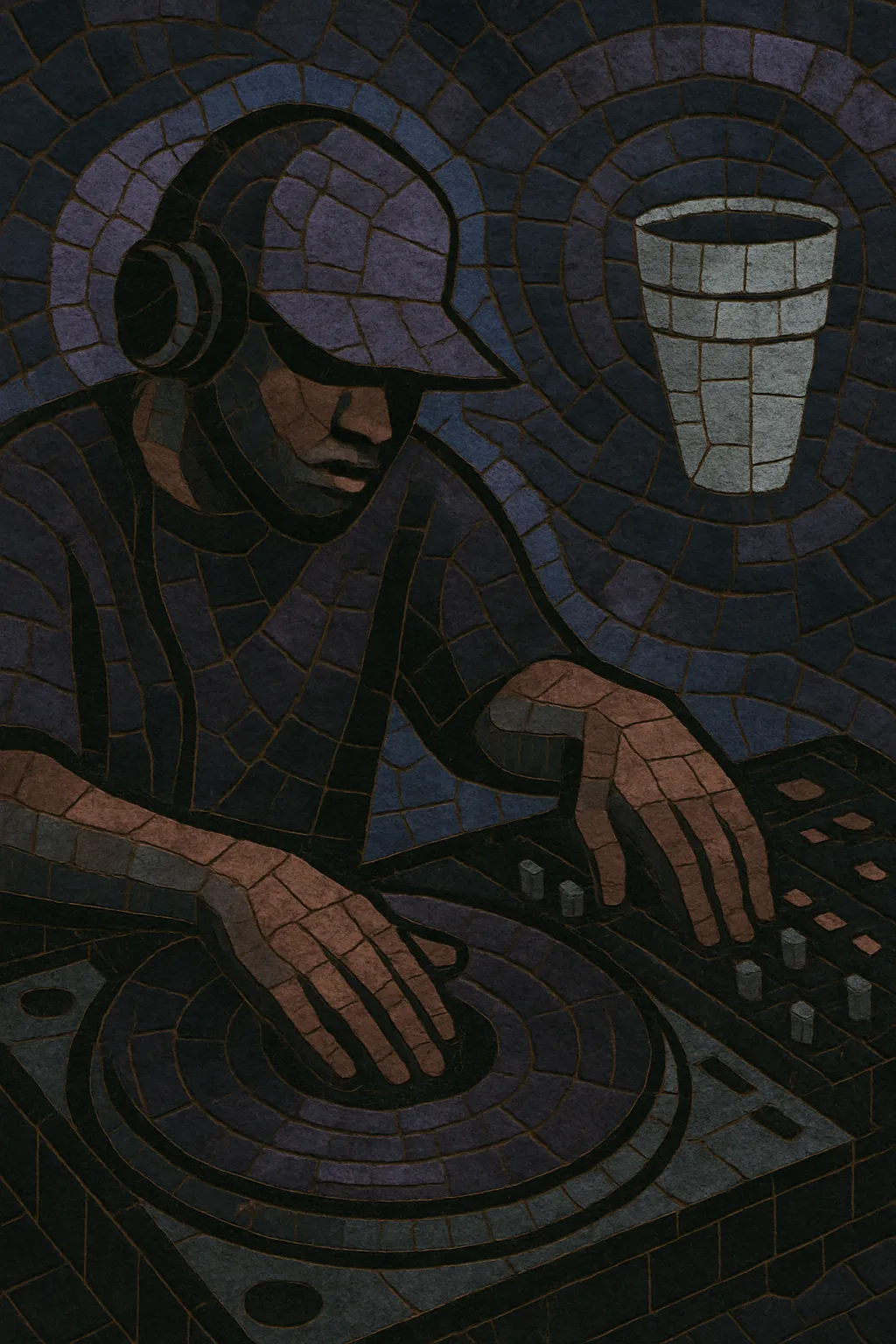
Chopped and screwed is a hip-hop remix technique and regional style that slows songs down dramatically—often to around 60–70 BPM—and lowers the pitch, creating a syrupy, heavy-lidded feel. DJs then "chop" the audio by cutting, repeating, and stuttering phrases, adding backspins, brakes, and pauses to exaggerate groove and space.
Pioneered in Houston, Texas by DJ Screw in the early 1990s, the sound is closely tied to car culture (SLABs) and the codeine-lean aesthetic. While originally rooted in mixtapes of Southern rap, the approach has since been applied to R&B, pop, and even electronic music, becoming a widely imitated post-production sensibility across the internet era.
Chopped and screwed originated in Houston, Texas, spearheaded by DJ Screw. Using turntables, a mixer, and cassette recorders, Screw slowed rap tracks well below their original tempo and performed live "chops"—quick cuts, stutters, backspins, and phrased repeats. His "Screw Tapes," customized for neighborhoods, crews, and friends, circulated through the city, defining a distinct local sound bound to Houston car culture and codeine-influenced, unhurried vibes.
The Screwed Up Click (S.U.C.)—including artists like Fat Pat, Lil' Keke, Big Moe, and Big Pokey—cemented the sound’s identity. DJ Screw’s mixes showcased Southern rap (including Houston peers and regional hits) in a radically slowed, bass-forward frame. By the late 1990s, DJ Screw operated Screwed Up Records & Tapes, making the style a cornerstone of Houston’s musical identity. DJ Screw’s passing in 2000 marked the end of an era but not of the style.
In the 2000s, Swishahouse (Michael "5000" Watts) and affiliates helped bring the aesthetic to a wider audience, aligning it with mainstream successes by Paul Wall, Chamillionaire, Slim Thug, and Mike Jones. Parallel crews such as OG Ron C & The Chopstars promoted a refined approach (“ChopNotSlop”), keeping the technique alive through official remixes and radio shows.
Online platforms catalyzed a broader adoption of slowed, pitched-down treatments across genres, inspiring vaporwave, witch house, and cloud rap aesthetics, and shaping new waves of phonk and drift phonk. The technique’s DNA now appears in pop, R&B, and electronic edits, while Houston’s foundational ethos—space, bass, and hypnotic repetition—remains the reference point.

